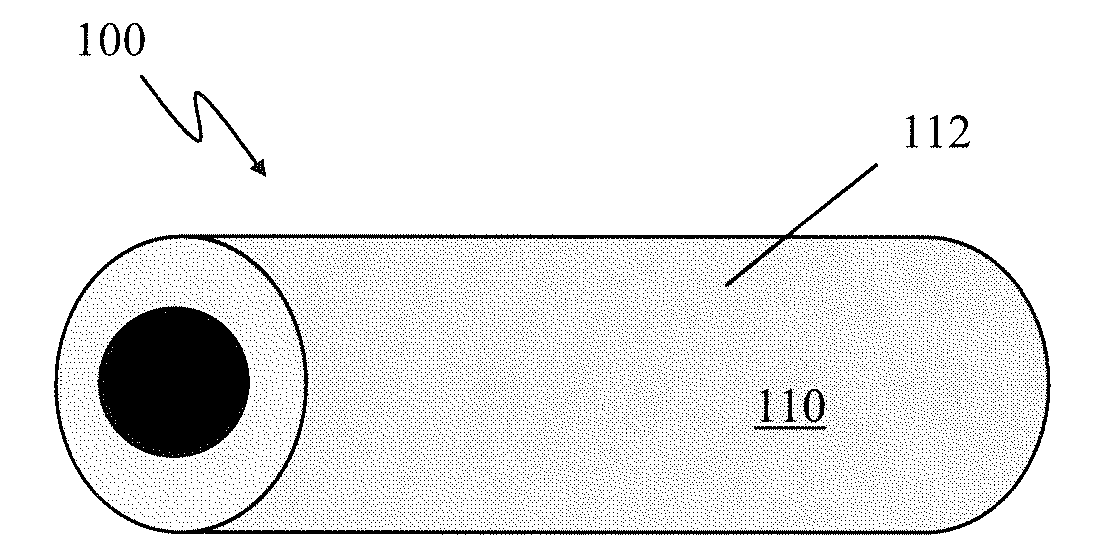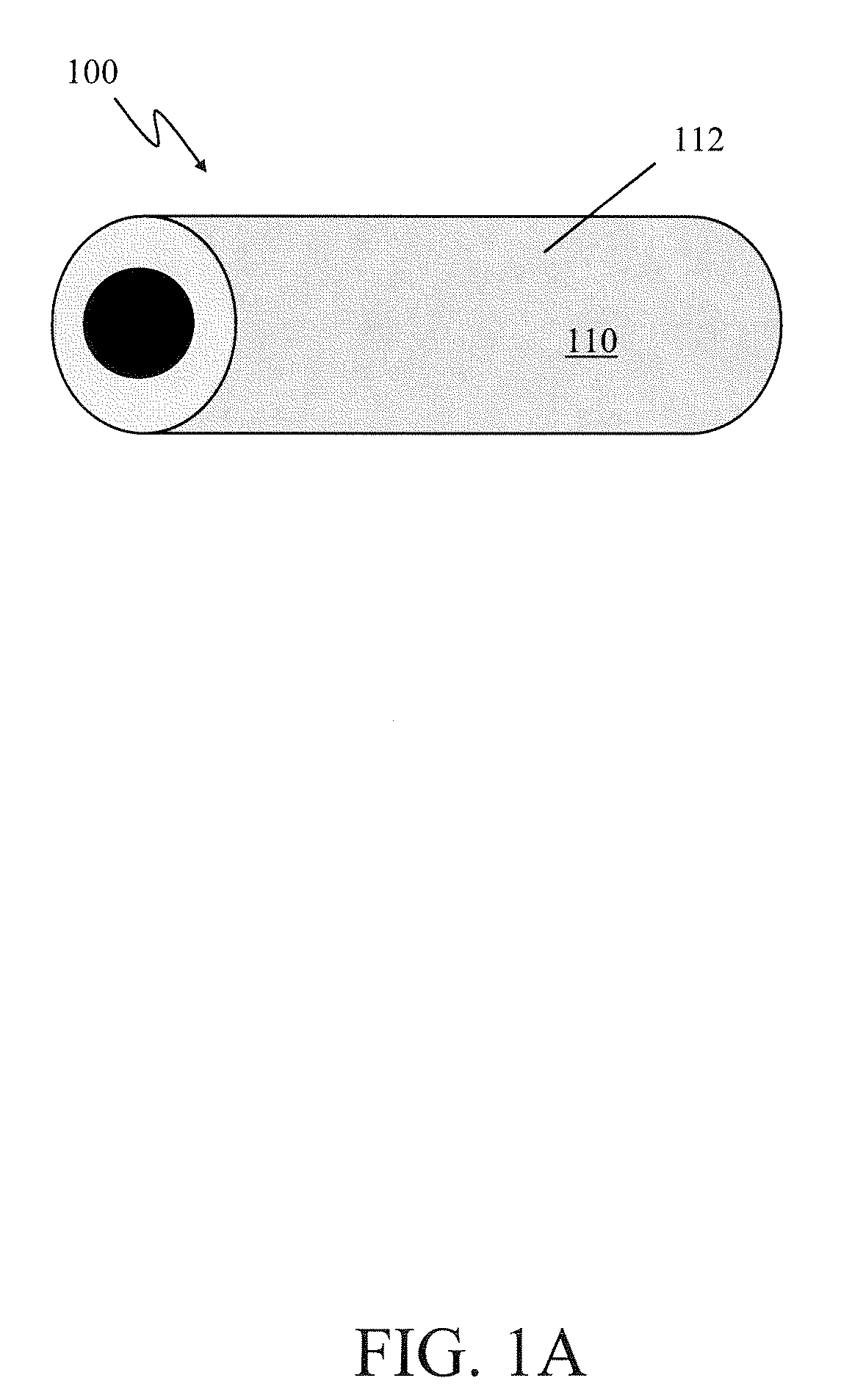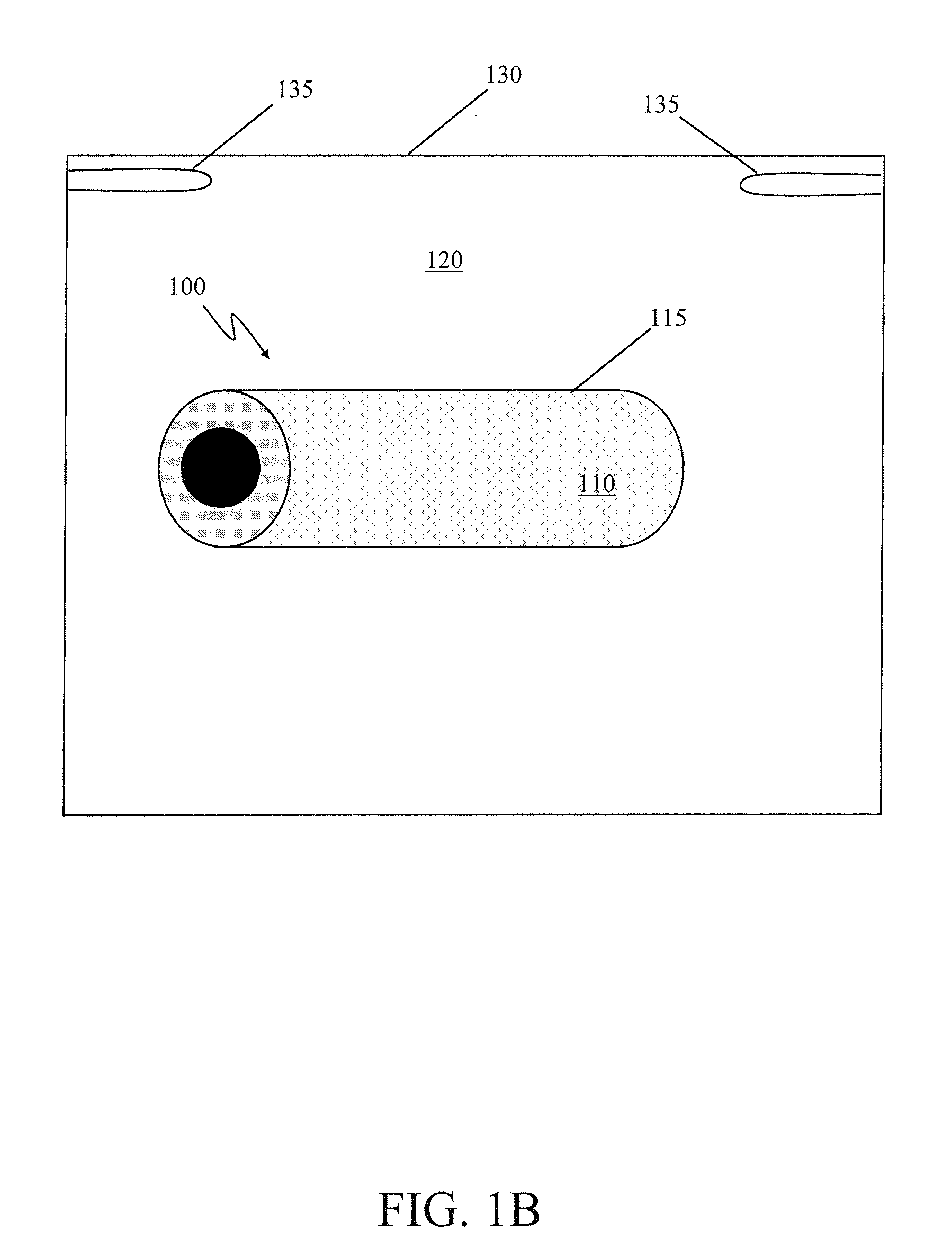Surface properties of polymeric materials with nanoscale functional coating
- Summary
- Abstract
- Description
- Claims
- Application Information
AI Technical Summary
Benefits of technology
Problems solved by technology
Method used
Image
Examples
Embodiment Construction
[0017]FIGS. 1A-1C presents perspective views of an example polymeric object 100 of the present invention at different stages of fabrication. The example embodiment presented is an implantable polymeric object 100 such as a catheter. As shown in FIG. 1A the object 100 is made by a process that comprises providing a polymeric substrate 110 having a surface 112.
[0018]FIG. 1B shows the object 100 while exposing the substrate 110 to an initial plasma reactant 120. The initial plasma treatment activates the substrate's surface 112 (FIG. 1A) to a grafting reaction. Such activation can be verified by measuring a reduction in a water contact angle of a surface 115 of the substrate 110 as compared to the surface 112 before the initial plasma treatment. As shown in FIG. 1B, the initial plasma treatment is carried out in a plasma chamber 130 having electrodes 135. The electrodes 135 are maintained in a range from about 10° C. to about 100° C. during the initial plasma treatment.
[0019]FIG. 1C sh...
PUM
| Property | Measurement | Unit |
|---|---|---|
| Temperature | aaaaa | aaaaa |
| Temperature | aaaaa | aaaaa |
| Pressure | aaaaa | aaaaa |
Abstract
Description
Claims
Application Information
 Login to View More
Login to View More - R&D Engineer
- R&D Manager
- IP Professional
- Industry Leading Data Capabilities
- Powerful AI technology
- Patent DNA Extraction
Browse by: Latest US Patents, China's latest patents, Technical Efficacy Thesaurus, Application Domain, Technology Topic, Popular Technical Reports.
© 2024 PatSnap. All rights reserved.Legal|Privacy policy|Modern Slavery Act Transparency Statement|Sitemap|About US| Contact US: help@patsnap.com










